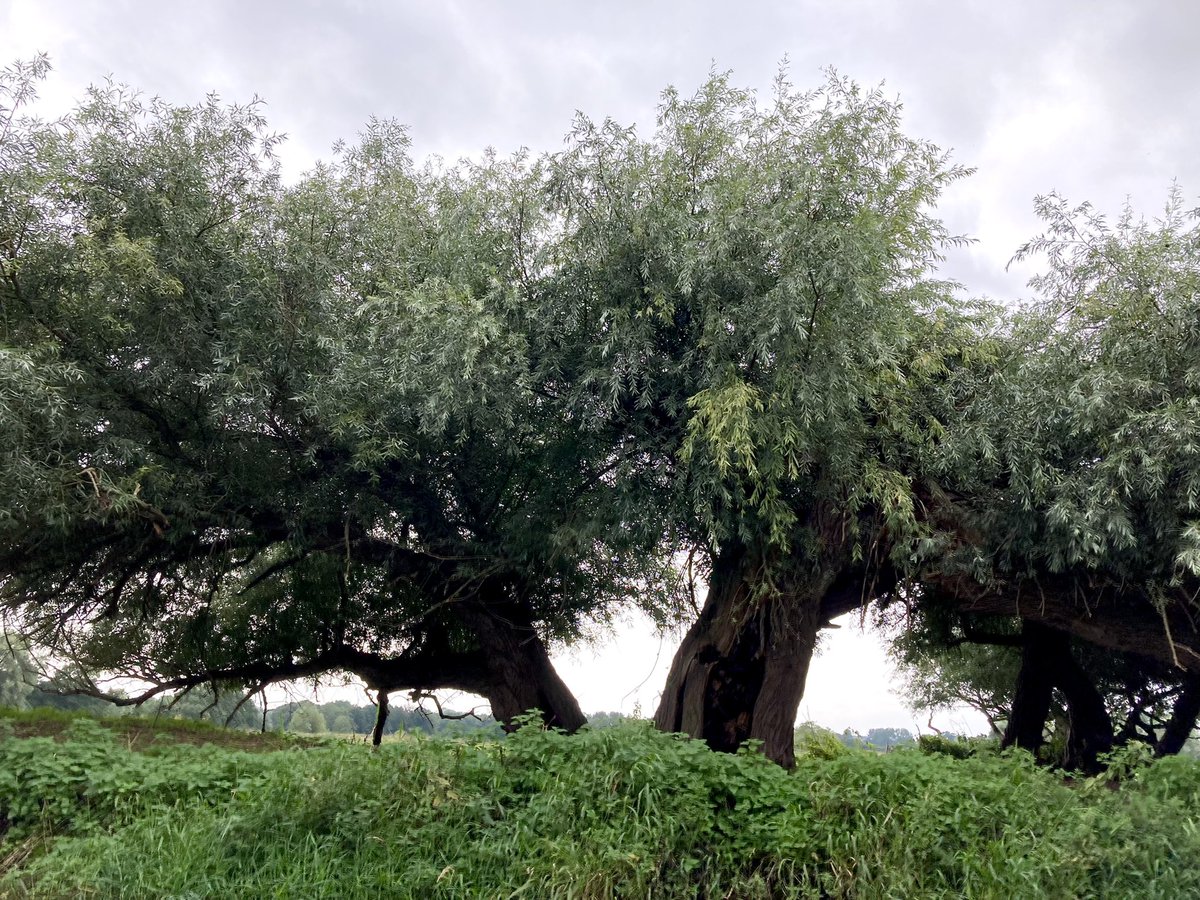Here's a THREAD I’ve been mulling over recently: it’s about an #IronAge fenland site called Stonea Camp, claimed to be the lowest-lying ‘#hillfort’ in Britain. What does its location & archaeology suggest about its original purpose? (Photo visitcambridgeshirefens.org/history/stonea…) 

This is what the site looks like: a roughly D-shaped enclosure believed to have been built in 2 phases. (A still from @oatweet’s sketch fab of the site, which I can’t currently seem to make to workhttps://sketchfab.com/3d-models/stonea-camp-e389079f9a80482d9326041119b76a97). 

3. The ditches/banks of the original 9.6 ha. enclosure have been almost completely ploughed out. Little remains of 2 further periods of change, but the partially-reconstructed banks & ditches of the last, more complex, 4ha. enclosure still survive (see hillforts.arch.ox.ac.uk). 

4. So, that’s what the site looks like from above and here’s a panoramic view (via Wikipedia). What’s so interesting about its location? 

5. Well, it’s so low-lying, just a couple of metres above sea-level in an area that flooded to c.4-5m in winter. The contour lines marked 0 enclose areas (eg Latches Fen, Horse Moor) at/below sea-level - always wet/waterlogged. You need to look carefully to find the 0, I’m afraid 

6. And the Environment Agency map shows how Stonea Camp lies surrounded by an inland lake of land at a medium risk of flooding …od-warning-information.service.gov.uk/long-term-floo…. It’s not actually high enough to be safe, but ... 

7. Its geology shows that the Camp lies on a low ‘island’ of well-drained gravel (pink), & clay (blue), surrounded by what was once a large area of peat. Brown=surviving peat (often < sea-level); yellow=silt/clay whose peat cover has been stripped by post-drainage ploughing. 

8. Archaeological excavations have found little evidence that people lived on the site. Its Iron Age origins & its ditches & banks led to its interpretation as a hillfort, a place of refuge in periods of danger; supported, perhaps, by evidence of several violent deaths .. 

9. Both dating from around the beginning of the 1stC AD, towards the end of the site’s prehistoric use when many of the final phase earthworks were deliberately levelled, not long after they were built. (Ref for prev. tweet s3.amazonaws.com/academia.edu.d….)
Below: pastscape.org.uk/hob.aspx?hob_i…
Below: pastscape.org.uk/hob.aspx?hob_i…

10. However, you’ll know from @preshitorian & others that not all hillforts are forts, or even on hills. Their work suggests that many may have been built as places where communities from across large regions gathered for trading & festivals.. (ox.ac.uk/news/2017-06-2…) And ...
11. ... excavations at other similar fen-edge ‘hillforts’ - eg at Borough Fen, Tattershall Thorpe, & Arbury Camp - suggest that they were built to manage large communal herds of cattle grazing on fen pastures in summer, autumn roundups, & seasonal assemblies for managing both. 

12. (Photo in last tweet from cambridgecarbonfootprint.org/fen-cattle-102…)
13. Stonea Camp’s location in the middle of a vast area of wetland, the absence of evidence for settlement, & the long-standing collective exploitation of fen pastures, makes the site’s use for the management of seasonal grazing as likely as an interpretation any other. END 

• • •
Missing some Tweet in this thread? You can try to
force a refresh














